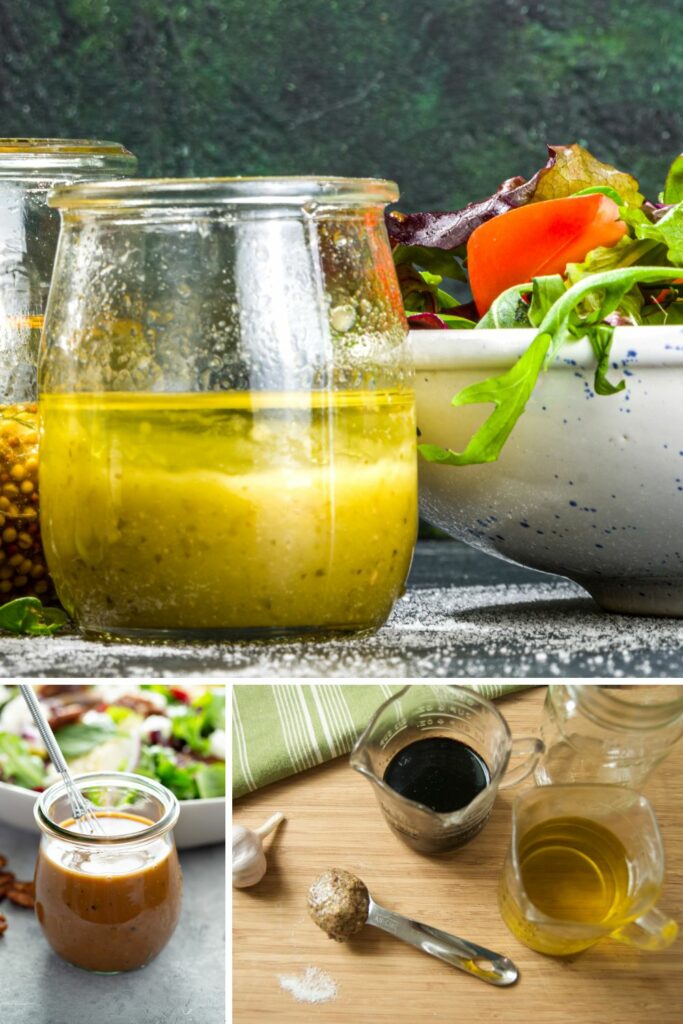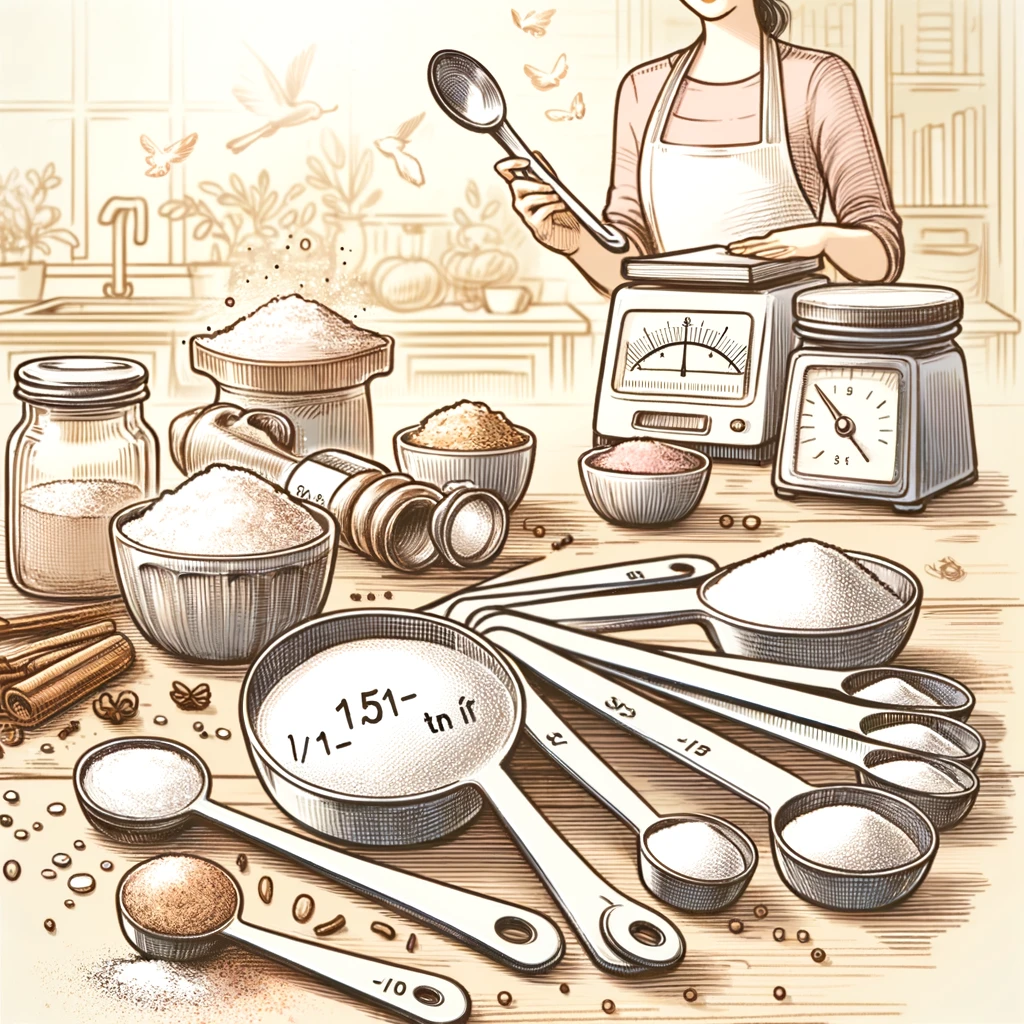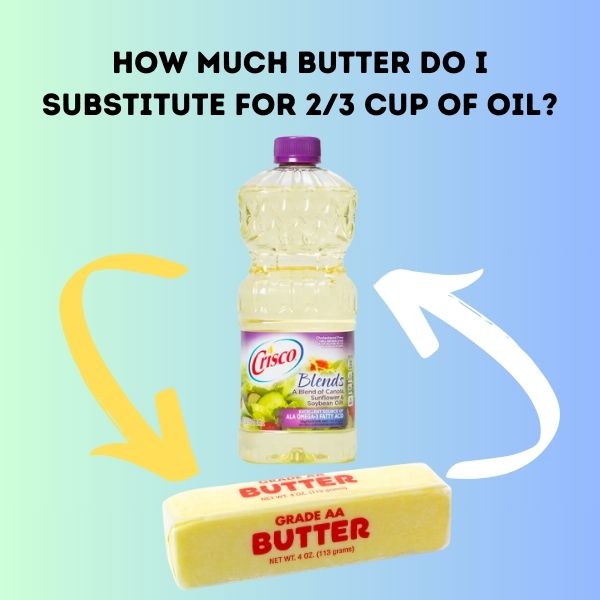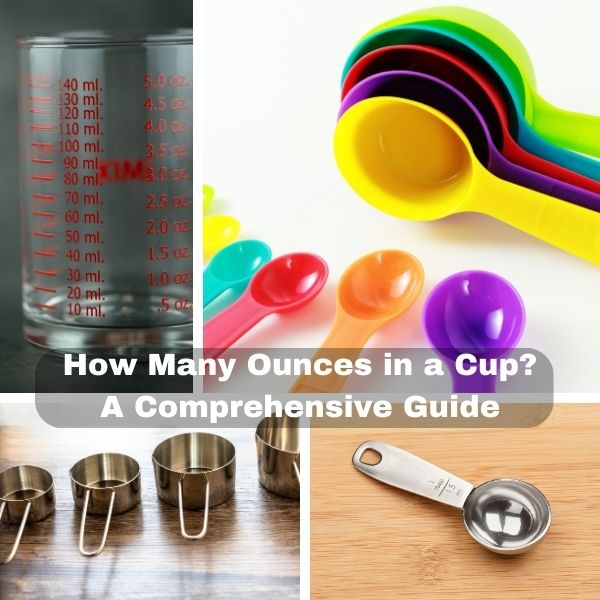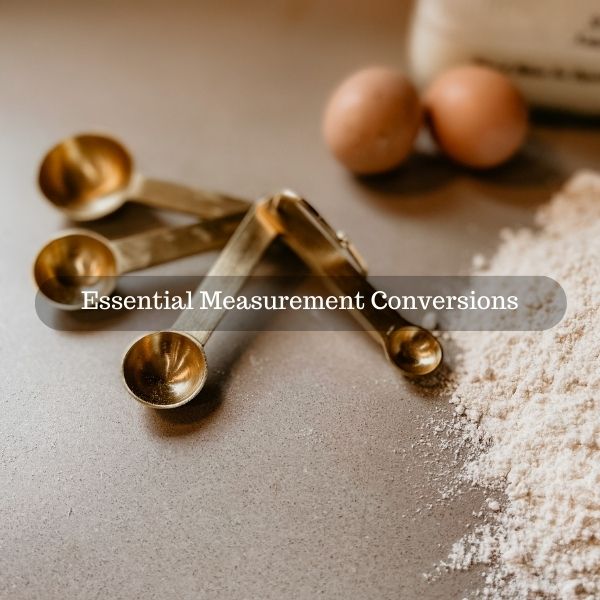Balsamic vinegar, with its rich, complex flavors and deep coloring, is an essential staple in many kitchens. Originating from Italy, this unique vinegar is made from freshly harvested grape juice, which is then aged to perfection. While it is a versatile ingredient, enhancing a variety of dishes from salads to desserts, one question that often arises is about its longevity: “Does balsamic vinaigrette go bad?” Like all food products, balsamic vinegar and vinaigrettes made from it do have a shelf life. This article delves deep into understanding the storage, shelf life, and other intriguing facets of this exquisite condiment. Join us on this flavorful journey as we explore all there is to know about balsamic vinaigrette’s quality and safety.
The Shelf Life of Balsamic Vinegar
Balsamic vinegar, unlike its other vinegar counterparts, undergoes a unique aging process. This process not only enhances its flavor but also impacts its shelf life. Here’s a closer look:
Unopened Bottles: Quality balsamic vinegar, when kept in its original, unopened bottle and stored in a cool, dark place away from direct sunlight, can last indefinitely. This is due to its high acid content, which acts as a natural preservative. However, most manufacturers will place a ‘best before’ date which typically ranges from 3 to 5 years from the production date. While this doesn’t mean the vinegar will spoil after this period, it may start to lose some of its unique characteristics.
Opened Bottles: Once opened, the clock starts ticking. The exposure to air can cause balsamic vinegar to oxidize, which might affect its taste and aroma. Generally, when properly stored, an opened bottle of balsamic vinegar can retain its best quality for up to 3 years. However, it’s always advisable to use it within a year to enjoy its optimal flavor.
Traditional Balsamic: If you have invested in a bottle of “Traditional Balsamic Vinegar,” which has undergone extensive aging, sometimes over a decade or more, you’re in possession of a vinegar that boasts an exceptional shelf life. This premium variety, often used in modest quantities due to its intense flavor, can last many years, even after opening.
Does Balsamic Vinaigrette Go Bad?
Balsamic vinaigrette, a delightful blend of balsamic vinegar with oils, herbs, and other ingredients, is a favorite dressing for many. However, just like any other food product, it prompts an essential question: does it go bad? Let’s unravel this query to give you a definitive answer.
Nature of Ingredients: Balsamic vinaigrette primarily consists of balsamic vinegar and oil. Both these ingredients are known for their long shelf lives. However, once combined, especially with other ingredients like garlic or herbs, the mixture can become susceptible to spoilage.
Preservation Mechanism: Balsamic vinegar is naturally acidic, which aids in preserving the vinaigrette. The oil creates a barrier, slowing down the growth of microorganisms. But, if water or contaminants enter the mix, it can compromise the vinaigrette’s longevity.
Shelf Life: An unopened bottle of store-bought balsamic vinaigrette can last for up to 12-18 months in a pantry. Once opened, it’s best to consume it within 3-6 months for optimal freshness. Homemade versions, due to the lack of preservatives, have a shorter lifespan, usually around 1-2 weeks in the refrigerator.
Signs of Spoilage: If your vinaigrette emits an off or rancid smell, it’s a clear indication it’s gone bad. Changes in color, mold growth, or a noticeable separation that doesn’t resolve with shaking are other signs of spoilage.
Storage Matters: Always store your balsamic vinaigrette in a cool, dark place. Once opened, it’s wise to refrigerate, especially if it’s a homemade blend. Ensure the bottle or container is tightly sealed to prevent air and contaminants from entering.
Safety First: While consuming slightly aged vinaigrette might not be harmful, it’s essential to ensure it hasn’t gone bad. If in doubt, it’s safer to discard and make a fresh batch. Consuming spoiled vinaigrette can lead to foodborne illnesses.
Homemade vs. Store-Bought: Store-bought versions often contain preservatives, extending their shelf life. In contrast, homemade vinaigrettes lack these additives, making them fresher but also more perishable.
Boosting Longevity: If you’re making your vinaigrette, consider adding a natural preservative like lemon juice or using pasteurized ingredients. Always use clean utensils and containers to prepare and store the vinaigrette.
A Note on Balsamic Reduction: Balsamic reductions or glazes are vinegar cooked down to a syrupy consistency. While they have a longer shelf life due to reduced water content, they can still spoil over time, especially if contaminants are introduced.
Final Verdict:Yes, balsamic vinaigrette can go bad. Its shelf life depends on its ingredients, storage conditions, and whether it’s a homemade or commercial product. Always check for signs of spoilage before consumption and store appropriately to maximize freshness.
How to Tell If Balsamic Vinegar Has Gone Bad:
Determining whether balsamic vinegar has turned bad can be a bit tricky since its inherently acidic nature acts as a preservative. Nevertheless, there are certain signs to look out for:
Appearance: Good balsamic vinegar has a consistent texture. If you notice any cloudiness, sediment at the bottom, or a filmy layer on the surface, it might be an indication that the vinegar is starting to degrade.
Smell: Fresh balsamic vinegar has a robust and sweet aroma with undertones of fruits and wood, a result of its aging process. If it starts to emit a strong, sharp, or sour odor, distinct from its usual scent, it may have gone bad.
Taste: While balsamic vinegar is naturally tangy, if it tastes overly sour or has an off-flavor, it’s best to discard it.
Texture: Balsamic vinegar, especially aged ones, have a syrup-like consistency. If the vinegar becomes too thick or has a slimy texture, it’s a sign of spoilage.
Mold: While rare, due to its acidic nature, the presence of mold inside the bottle is a definite sign that the vinegar has gone bad. This is usually a result of contamination, perhaps from using a dirty spoon or storing it improperly.
Expiration Date: While the ‘best before’ date isn’t a definitive indicator of spoilage, it’s a good benchmark. If your vinegar is way past this date and exhibits any of the above signs, it’s best to err on the side of caution and discard it.
Can I use expired balsamic vinaigrette?
Navigating the intricacies of expiration dates can sometimes be confusing. When it comes to balsamic vinaigrette, the question of whether or not to use it post-expiration largely hinges on several factors:
Definition of “Expired”: Often, what’s labeled on products as an “expiration date” is, in fact, a “best before” or “use by” date. This date is an indication of when the product will maintain its best quality, not necessarily when it becomes unsafe to consume.
Storage Conditions: Balsamic vinaigrette’s longevity greatly depends on how it’s stored. If it has been continuously kept in a cool, dark place and sealed tightly, it’s likely to last longer than its indicated date. Conversely, if it’s been exposed to heat, light, or air, its quality may diminish faster.
Ingredients: Pure balsamic vinegar has a long shelf life due to its acidity. However, balsamic vinaigrette often contains other ingredients like oils, herbs, and sometimes dairy. These additional components can shorten the vinaigrette’s overall shelf life.
Signs of Spoilage: Always check for signs of spoilage before using any expired product. If the vinaigrette smells rancid, has mold, or its texture has significantly changed, discard it.
Taste and Quality: Even if the vinaigrette hasn’t spoiled, its flavor might not be as vibrant post-expiration. Using it in your dishes might not yield the best results.
Safety First: While it’s tempting to not waste food, it’s essential to prioritize health. If you’re ever in doubt about the freshness of your balsamic vinaigrette, it’s better to err on the side of caution.
How long does balsamic vinaigrette last in the fridge?
Storing your balsamic vinaigrette in the refrigerator can significantly extend its life, especially if it contains ingredients other than pure balsamic vinegar. Here’s a breakdown of its longevity when stored in the fridge:
Homemade Balsamic Vinaigrette: When made at home, vinaigrette often lacks the preservatives found in store-bought versions. A homemade blend, typically containing balsamic vinegar, oil, and possibly herbs or garlic, usually remains fresh for 1 to 2 weeks in the fridge.
Store-Bought Balsamic Vinaigrette: Commercially prepared vinaigrettes often contain stabilizers and preservatives, granting them a longer shelf life. Once opened, they can last anywhere from 1 to 3 months in the refrigerator. However, always refer to the manufacturer’s recommendations and use-by date on the label.
Opened Pure Balsamic Vinegar: If you’re storing pure balsamic vinegar in the fridge after opening, it can retain its quality for several years. But remember, the unique aromatic compounds in balsamic vinegar can absorb other odors in the refrigerator over time. Hence, always ensure it’s tightly sealed.
Storing After Use: If you’ve used a spoon or utensil directly in the bottle or container, ensure it’s clean to avoid introducing contaminants. Introducing foreign particles or substances can reduce the vinaigrette’s shelf life.
Consistency Checks: Balsamic vinaigrette may thicken or separate in the fridge. This is normal due to the oils solidifying at cooler temperatures. Before using, give it a good shake or stir to re-emulsify the ingredients.
Smell and Taste: Always give the vinaigrette a quick sniff and a small taste test before using. Any off-odors or flavors indicate it’s time to discard it.
How long does balsamic vinegar last once opened?
An opened bottle of balsamic vinegar undergoes different dynamics compared to its sealed counterpart. Here’s a comprehensive understanding of its post-opening longevity:
Storage Conditions: When stored in a cool, dark place and kept away from direct sunlight, opened balsamic vinegar can retain its peak quality for a long time. Proper storage is crucial to prevent the product from oxidizing and degrading.
Duration: Generally speaking, once opened, a good-quality balsamic vinegar can last anywhere from 2 to 3 years, provided it’s stored correctly. Some premium varieties, especially those aged for an extended period, might even have a longer shelf life. However, for the best aromatic experience, it’s advisable to use it within a year.
Acid Content: Balsamic vinegar’s inherent acidity plays a significant role in its preservation. This high acid content acts as a natural barrier against microbial growth, ensuring the product remains safe to consume for an extended period.
Oxidation: Once a bottle of balsamic vinegar is opened, it gets exposed to oxygen. Over time, this can lead to slight changes in flavor, with the vinegar losing some of its vibrant notes. This process is slow, but it’s one of the reasons it’s recommended to consume the vinegar within a specified period after opening.
Tight Sealing: Always ensure the cap or cork is tightly secured after each use. This practice helps limit the vinegar’s exposure to air, slowing down the oxidation process and preserving its flavor.
Cross-Contamination: Avoid inserting used or dirty spoons into the bottle. Any introduction of contaminants can potentially reduce the shelf life of the vinegar.
To conclude, while balsamic vinegar showcases impressive longevity once opened, it’s essential to store it properly and be mindful of changes in its characteristics. Proper care ensures that every drop poured enhances the dishes it graces.
How to Properly Store Your Balsamic Vinegar & Extend its Shelf Life:
Ensuring the longevity and preserving the quality of your balsamic vinegar largely hinges on appropriate storage practices. Here are the essentials:
Avoid Direct Sunlight: UV rays can degrade the quality of balsamic vinegar. Store your bottle in a dark place, like a pantry or cupboard, away from windows or sources of direct sunlight.
Cool, Consistent Temperature: While balsamic vinegar doesn’t need refrigeration, it appreciates a cool environment. Avoid storing it near ovens, stoves, or other heat sources. Temperature fluctuations can adversely impact its quality.
Tightly Sealed: Oxygen is not a friend of balsamic vinegar once the bottle is opened. Ensure that the bottle cap or cork is tightly sealed after each use to prevent oxidation and preserve its rich flavors.
Upright Storage: Always store the vinegar bottle in an upright position. This limits the surface area exposed to oxygen and minimizes the chances of contamination.
Avoid Contamination: Never return used vinegar to the bottle, and always use clean utensils when handling. Introducing contaminants can compromise the vinegar’s quality and reduce its shelf life.
Glass Bottles Preferred: Balsamic vinegar is best stored in glass bottles. Glass is non-reactive and preserves the vinegar’s flavor profile. If purchasing in bulk, consider transferring the vinegar to smaller glass bottles for daily use, keeping the bulk quantity sealed and untouched.
Check for Sediments: Over time, natural sediments may settle at the bottom of the bottle. This is normal, especially for traditionally made balsamic vinegar. However, it’s good practice to check the bottle periodically. If the sediments appear abnormal or the vinegar shows signs of spoilage, it might be best to discard it.
Refrigeration Optional: While it’s not necessary, if you prefer to refrigerate your balsamic vinegar, ensure it’s tightly sealed to prevent it from absorbing other odors in the fridge.
By adhering to these storage guidelines, you can significantly extend the shelf life of your balsamic vinegar and enjoy its nuanced flavors for years to come
The Health Benefits of Balsamic Vinegar:
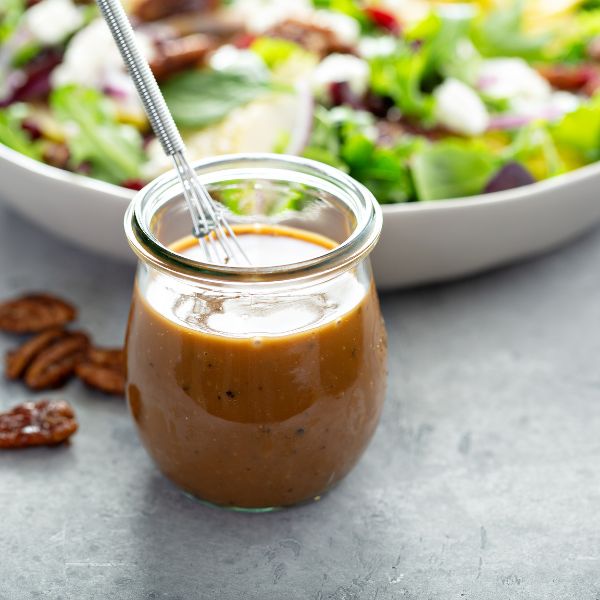
Balsamic vinegar, apart from being a cherished culinary ingredient, offers an array of health benefits:
Rich in Antioxidants: Balsamic vinegar contains antioxidants, primarily polyphenols from grapes, which help combat oxidative stress in the body. Oxidative stress can lead to cell damage and is linked to various chronic diseases.
Supports Digestion: The acetic acid present in balsamic vinegar promotes the production of pepsin, an enzyme that aids in the digestion of proteins in the stomach. This can lead to improved gut health and smoother digestion.
Blood Sugar Control: Studies suggest that balsamic vinegar can enhance insulin sensitivity and reduce the post-meal rise in blood glucose levels, making it beneficial for those monitoring their blood sugar.
Heart Health: Balsamic vinegar can help in reducing blood pressure and cholesterol levels. The antioxidants in it can also prevent the oxidation of LDL cholesterol, reducing the risk of arterial plaque formation.
Weight Management: Some research indicates that the acetic acid in vinegar might help in suppressing appetite and increasing the rate at which fats are burned in the body, potentially aiding weight management.
Anti-microbial Properties: Balsamic vinegar exhibits anti-microbial activity, making it effective against certain pathogens and bacteria. This is why it’s traditionally been used in various remedies and for food preservation.
Supports Bone Health: It contains a range of minerals, including calcium, iron, manganese, and phosphorus, which can be beneficial for bone health.
Anti-inflammatory Properties: Chronic inflammation can lead to numerous health issues. The polyphenols in balsamic vinegar have anti-inflammatory effects that might help in reducing inflammation-related ailments.
Enhances Skin Health: The compounds in balsamic vinegar can help improve the complexion, treat blemishes, and nourish the skin when applied topically, although it’s essential to do a patch test first and dilute appropriately.
Promotes Healthy Aging: The antioxidants in balsamic vinegar can protect the body against cellular damage, potentially slowing down aging processes and promoting overall longevity.
While balsamic vinegar is indeed beneficial, it’s essential to consume it in moderation due to its acidity and natural sugar content. As always, it’s crucial to consult with a healthcare professional before making significant dietary changes or using balsamic vinegar for therapeutic purposes.
What Makes Balsamic Better Than The Other Vinegars:
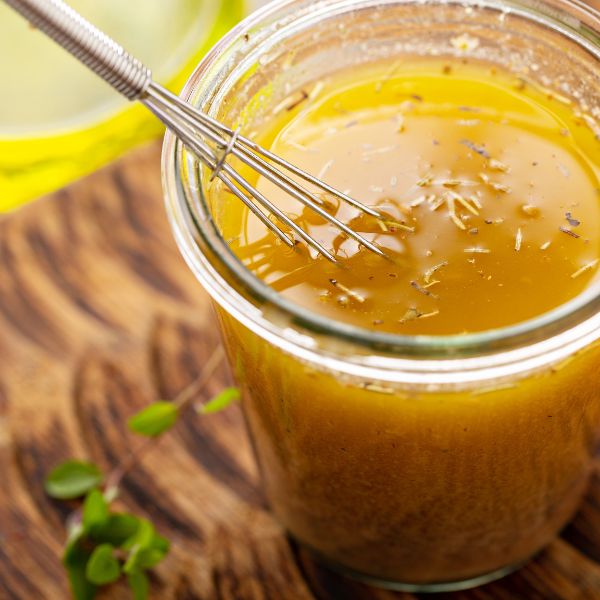
Balsamic vinegar, with its rich history and unique production process, is often considered a cut above other vinegars. Let’s delve into what sets it apart:
Origin & Tradition: Balsamic vinegar traces its roots back to Modena and Reggio Emilia in Italy. It’s produced using age-old techniques, often passed down through generations, ensuring the end product’s authenticity and quality.
Complex Production Process: Unlike other vinegars that can be made within a short period, traditional balsamic vinegar undergoes a meticulous process. The must (unfermented grape juice) is simmered to create a concentrate, which is then aged in wooden barrels for several years, even decades, to develop its distinctive flavor.
Flavor Profile: Balsamic vinegar boasts a well-balanced taste, blending sweet and tart notes. Its rich, syrupy consistency and complex flavors—derived from the wooden casks it matures in—distinguish it from other vinegars.
Versatility: Its unique taste makes it suitable for a plethora of dishes, from salads and grilled meats to desserts and fruits. Balsamic’s ability to enhance both savory and sweet recipes gives it an edge.
Aging Process: The aging process in wooden barrels infuses the vinegar with flavors from the wood, adding depth to its taste. This intricate aging is unlike the quick fermentation processes of many other vinegars.
Varieties: Balsamic vinegar comes in various grades, including “Traditional” (aged for 12+ years) and “Commercial” (which might be mixed with other vinegars or have thickeners). Each variety offers a different experience, allowing connoisseurs and chefs to choose the perfect type for their needs.
Nutrient Composition: While all vinegars have health benefits, balsamic vinegar’s lengthy fermentation process may result in a higher concentration of certain beneficial compounds.
Rich Color: Balsamic vinegar’s deep, glossy brown hue is not only visually appealing but is also a testament to its concentration and aging process.
Price Point: The effort, time, and expertise involved in producing balsamic vinegar, especially the traditional variety, reflect in its price, making it a premium choice among vinegars.
Unique Pairings: From strawberries to parmesan cheese, balsamic vinegar’s diverse flavor profile makes it an exciting ingredient to experiment with, leading to some unexpected and delightful pairings.
While other vinegars have their place and unique benefits, the heritage, craftsmanship, and unparalleled taste profile of balsamic vinegar set it in a league of its own.
How to Choose the Best Balsamic Vinegar:
Selecting the right balsamic vinegar can elevate your culinary endeavors. With many options available, here’s a guide to help you make an informed choice:
- Understand the Types:
- Traditional Balsamic Vinegar (Aceto Balsamico Tradizionale): Produced in Modena or Reggio Emilia, this is the crème de la crème. Aged for a minimum of 12 years and certified by a consortium, it’s thick, syrupy, and can be drizzled over various dishes.
- Commercial Balsamic Vinegar: More common and affordable, this type might be mixed with other vinegars, thickeners, or colors. Suitable for everyday use.
- Condimento Balsamico: Often seen as a middle-ground, it’s aged less than the traditional variant but is of higher quality than most commercial types.
- Check the Label: A genuine traditional balsamic vinegar will have D.O.P. (Denominazione di Origine Protetta) on its label. This is an Italian certification guaranteeing its origin and production methods.
- Ingredients List: Quality balsamic vinegar should have grape must as its primary ingredient. Avoid those with caramel coloring or cornflour, which can dilute flavor and authenticity.
- Age Matters: Generally, the older the vinegar, the richer and more complex its flavor. However, age also comes with a higher price tag. Decide based on your budget and intended use.
- Density: Quality balsamic vinegar has a syrup-like consistency due to the reduction of grape must. If possible, check its viscosity by tilting the bottle.
- Country of Origin: Authentic balsamic vinegar comes from Italy, particularly the regions of Modena and Reggio Emilia. Be wary of imitations.
- Taste Test: If you have the opportunity, taste before buying. A balanced flavor profile, combining sweetness and acidity, indicates a good balsamic vinegar.
- Packaging: A good balsamic vinegar is typically bottled in dark glass to protect it from light, which can degrade its quality.
- Price: As the adage goes, you get what you pay for. A very cheap balsamic vinegar might be an indication of inferior quality.
- Usage: Consider how you intend to use it. If it’s for drizzling over strawberries or Parmesan, invest in a high-quality traditional balsamic. For salad dressings or marinades, a decent commercial variety might suffice.
Using Balsamic Vinegar in Your Cooking
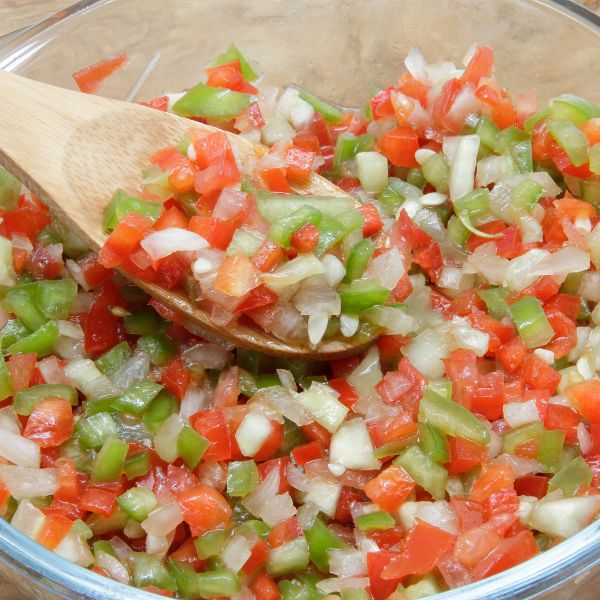
Balsamic vinegar, with its rich and complex flavor profile, can be a game-changer in the kitchen. Here’s how you can incorporate it into various dishes:
Salad Dressings: Balsamic vinaigrette is a classic. Combine balsamic vinegar with olive oil, a touch of mustard or honey for emulsification, and seasonings. It provides a delightful tanginess that enhances any salad.
Marinades: The acidity in balsamic vinegar makes it an excellent choice for marinades. It helps tenderize meats while infusing them with flavor. Combine it with herbs, garlic, and olive oil for a robust marinade perfect for chicken, beef, or pork.
Glazes and Reductions: Simmer balsamic vinegar until it reduces to a thick, syrupy consistency. This concentrated liquid is a delightful glaze for meats, vegetables, or even fruits like strawberries and figs.
Drizzled Finish: Elevate dishes like risotto, grilled meats, or roasted vegetables by drizzling a bit of quality balsamic vinegar over the top before serving. This adds a burst of flavor and a gourmet touch.
Desserts: Surprise your guests by drizzling balsamic reduction over vanilla ice cream, fresh berries, or panna cotta. The tartness of the vinegar juxtaposes the sweetness of the desserts, creating a memorable experience.
Soups and Stews: A splash of balsamic vinegar added to soups or stews can enhance their depth of flavor, giving them a unique edge.
Breads and Dips: Mix balsamic vinegar with olive oil, a sprinkle of herbs, and some grated Parmesan. Dip crusty bread into this concoction for a simple yet delectable appetizer.
Beverages: Yes, you read that right! A splash of balsamic vinegar in cocktails or mocktails can add a twist. Think about a balsamic strawberry mocktail or a balsamic-infused Bloody Mary.
Preserves and Chutneys: Incorporate balsamic vinegar into jams, preserves, or chutneys for an added layer of complexity. It pairs especially well with fruits like figs and cherries.
Pasta and Sauces: Add a splash of balsamic vinegar to your tomato-based pasta sauces for a hint of sweetness and tang. It can balance out the flavors beautifully.
Remember, when cooking with balsamic vinegar, a little goes a long way. Its robust flavor can easily overpower a dish, so use it judiciously. Also, when using a high-quality traditional balsamic, it’s often best to add it at the end of the cooking process or use it raw to retain its nuanced flavors.
How do you know if a vinaigrette is bad?
Vinaigrettes, especially when homemade, can be delightful additions to salads and other dishes. However, like all food items, they can go bad. Here’s how to discern if your vinaigrette is past its prime:
Smell: The first and most telling sign. A rancid or off smell, especially if it has an oily component, indicates that the vinaigrette has gone bad. Fresh vinaigrette should have a pleasant, tangy aroma.
Separation: While it’s normal for oil and vinegar to separate in a vinaigrette, a strange or irregular consistency upon mixing might be a warning sign. For instance, if the oil has solidified in clumps or if there’s an unusual cloudiness.
Taste: If you’re still unsure after a visual and olfactory examination, a small taste can be telling. Any sour or off taste, especially if it differs significantly from when it was fresh, is a clear indication.
Appearance of Mold: Mold or any fungal growth is a definite sign that the vinaigrette is spoiled. Any discolorations, especially green, white, or black spots, mean it’s time to discard the vinaigrette.
Change in Color: If the vinaigrette has darkened or exhibits any unusual color changes, it might be oxidized or spoiled.
Texture Changes: A vinaigrette that’s become unusually thick, slimy, or has developed a gel-like consistency is no longer good for consumption.
Storage Duration: If your vinaigrette has been sitting in the fridge for an extended period, it might be past its best. Homemade vinaigrettes, especially those with fresh ingredients like herbs or garlic, have a shorter shelf life than store-bought ones with preservatives.
Packaging: If the bottle or container housing the vinaigrette is bloated or if you hear a pronounced “pop” when opening, it might be due to fermentation or bacterial growth. Avoid consumption in this case.
Ingredients: Vinaigrettes with dairy or fresh ingredients spoil faster. Always be cautious and check these types thoroughly.
Storage Conditions: If you’ve inadvertently left your vinaigrette outside the fridge for a prolonged duration, especially in warm conditions, it’s more likely to have gone bad.
Does The Expiration Date Matter?
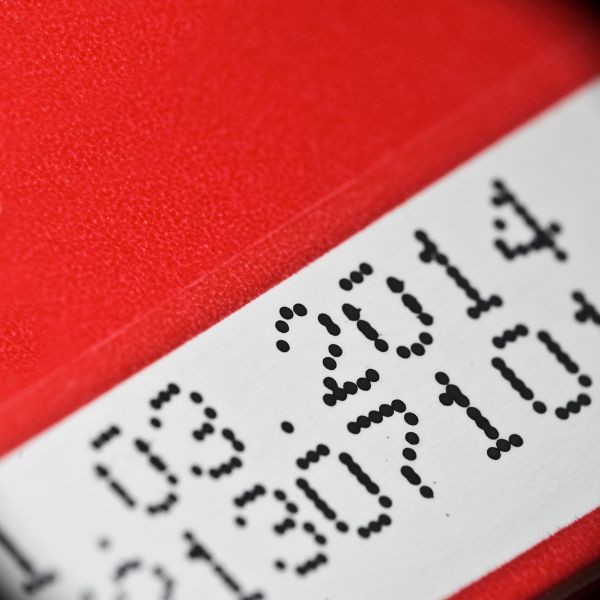
Expiration dates, often labeled as “best before” or “use by” dates, serve as guidelines provided by manufacturers to indicate the time frame during which the product maintains optimal quality. Here’s what you need to know about these dates, especially in relation to balsamic vinegar:
Guideline, Not a Deadline: Expiration dates are about quality, not safety. A product doesn’t necessarily become harmful after this date but might have diminished flavor or potency. However, it’s essential to use common sense; if a product looks or smells off, it’s best to discard it.
Balsamic Vinegar’s Longevity: Balsamic vinegar, particularly the traditional kind, can last years and often improves with age. The date on the bottle can be seen more as a “minimum aging” suggestion rather than an expiry.
Storage Matters: How you store a product can significantly impact its shelf life. Balsamic vinegar kept in a cool, dark place and tightly sealed will retain its quality longer than a bottle exposed to heat or sunlight.
Taste Test: If your balsamic vinegar is past its expiration date, give it a taste. If it retains its characteristic sweet-tart flavor without any off-tastes, it’s likely still good to use.
Visual Inspection: For products like balsamic vinegar, visual cues like mold or an odd color can be more indicative of spoilage than the printed expiration date.
Commercial vs. Traditional: Commercial balsamic vinegars, which might have additives, could have a different shelf life compared to traditional ones. Always check the label and storage instructions.
Safety First: While it’s true that many products last beyond their expiration dates, always prioritize safety. When in doubt, especially with items that have a high risk of bacterial contamination, it’s best to discard.
Regulations and Standards: Expiration date labeling can vary by country and product type. Some regions might not require a date for products like traditional balsamic vinegar due to its long shelf life.
Economic Implication: Relying strictly on expiration dates can lead to unnecessary waste. Before discarding an item, ensure it’s genuinely no longer good to use.
While expiration dates are useful markers for understanding a product’s peak quality period, they are just one tool in determining an item’s usability. With balsamic vinegar, due to its unique aging process and composition, the product often remains viable and flavorful well beyond the indicated date.
Can I Refrigerate Balsamic Vinegar?
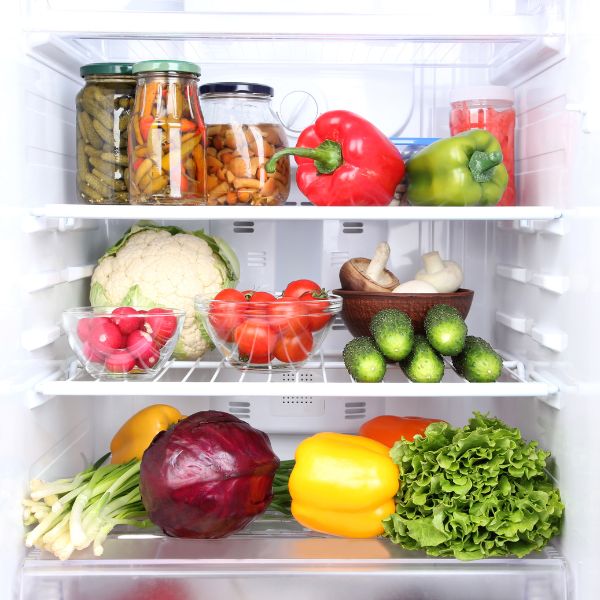
Refrigeration is a common method to prolong the shelf life of various food items. But when it comes to balsamic vinegar, the question of refrigeration is a bit more nuanced. Let’s explore the details:
Not a Necessity: Balsamic vinegar is naturally acidic, which makes it less susceptible to bacterial growth. Hence, it doesn’t need refrigeration to preserve its quality or safety for extended periods.
Flavor and Consistency: Storing balsamic vinegar in the fridge can alter its consistency, making it thicker, almost syrupy. This change isn’t harmful but might make it less versatile for certain recipes. The cold can also somewhat mute its flavors.
Condensation Risk: Every time you take the bottle out of the fridge and open it, there’s a chance of condensation forming inside. This added moisture can dilute the vinegar and might lead to spoilage over time.
Traditional vs. Commercial: Traditional balsamic vinegar, which is aged for many years, is robust and stable, making refrigeration unnecessary. Commercial varieties, especially those with added ingredients, might benefit more from refrigeration after opening, but it’s still not mandatory.
Shelf Life: While refrigeration isn’t necessary, storing your balsamic vinegar in a cool, dark place will help maintain its flavor and longevity. A pantry or cupboard away from direct sunlight or heat sources is ideal.
Specialty Varieties: Balsamic vinegars infused with fruits, herbs, or other flavorings might have a different composition and shelf life. For these types, follow the manufacturer’s storage recommendations, which might suggest refrigeration after opening.
A Personal Choice: If you prefer your balsamic vinegar cold or find that it enhances specific dishes, there’s no harm in refrigerating it. Just ensure the bottle is tightly sealed to prevent moisture and other contaminants.
Frequent Use: If you use your balsamic vinegar regularly, it’s more practical to keep it in a pantry for easy access rather than constantly taking it out of and returning it to the fridge.
Refrigerating balsamic vinegar isn’t harmful, it’s also not necessary for preserving its quality. Based on your usage and personal preference, you can decide the best storage method. Remember, the key to balsamic vinegar’s longevity is proper storage, whether it’s in the fridge or a pantry.
What Type Of Vinegar To Buy:
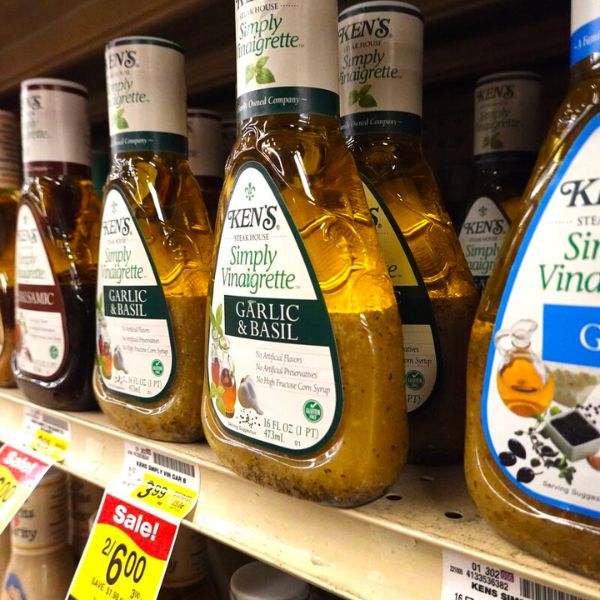
Vinegar is a versatile staple in many kitchens, and the type you choose can significantly influence the flavor and outcome of your dishes. Balsamic vinegar, with its distinctive taste and deep color, is just one among a vast array of vinegars available. Here’s a guide to help you understand which vinegar type might be best for your needs:
Traditional Balsamic Vinegar: Aged for at least 12 years and often much longer, traditional balsamic vinegar hails from the Modena or Reggio Emilia regions of Italy. It’s thick, sweet, and complex, making it ideal for drizzling over dishes or using in salad dressings. Due to its extended aging process, it tends to be pricier.
Commercial Balsamic Vinegar: This is a more affordable alternative to traditional balsamic. It might be aged for a shorter period and can have additives to replicate the flavor and consistency of the traditional variant. It’s suitable for general cooking and marinades.
White Balsamic Vinegar: Made from the same grapes as its darker counterpart but processed differently to retain a light color. It’s milder and slightly less sweet, perfect for dishes where you want the balsamic flavor without the dark hue.
Apple Cider Vinegar: Made from fermented apple juice, this vinegar is tangy and slightly sweet. It’s a popular choice for pickling, vinaigrettes, and even health remedies.
Red Wine Vinegar: Produced from fermented red wine, it offers a robust and tangy flavor, making it great for hearty salad dressings, marinades, and deglazing pans.
White Wine Vinegar: A milder vinegar derived from white wine, it’s ideal for light dressings, poultry dishes, and seafood.
Rice Vinegar: Originating in East Asia, this vinegar is milder and slightly sweet. It’s essential for sushi rice and Asian salads.
Champagne Vinegar: Made from the same grapes used in producing champagne, it has a delicate, light, and slightly fruity flavor. It’s excellent for dressings and seafood dishes.
Malt Vinegar: Distinctly tangy and made from malted barley, it’s a classic accompaniment for fish and chips.
Distilled White Vinegar: Highly acidic and clear, it’s primarily used for pickling, cleaning, and some baking recipes.
When selecting a vinegar:
- Purpose: Consider the purpose. Are you making a dressing, marinade, or a specific ethnic dish?
- Flavor Profile: Each vinegar brings a unique taste. Understand the dish you’re making and the flavor you aim to achieve.
- Price: Some vinegars, like traditional balsamic, can be expensive. Make sure it aligns with your budget, especially if you’ll use it frequently.
Balsamic Vinegar FAQ
Balsamic vinegar, with its rich history and unique production process, often raises questions among consumers. Let’s address some of the most frequently asked questions about this beloved condiment.
What is the difference between balsamic vinegar and regular vinegar?
Balsamic vinegar originates from Modena or Reggio Emilia in Italy and is made from the must (juice) of white Trebbiano grapes. It’s aged in wooden barrels for years, giving it a sweet, thick consistency. Regular vinegars can be made from various sources, including wine, apples, or grains, and are usually more acidic with a thinner consistency.
Why is some balsamic vinegar so expensive?
Traditional balsamic vinegar undergoes a lengthy aging process, sometimes over 25 years. The longer it’s aged, the more concentrated and complex its flavors become, which justifies the higher price.
Is balsamic vinegar good for health?
Yes, in moderation. It contains antioxidants and has been linked to improved cholesterol, lowered blood sugar, and aiding digestion. However, it’s also acidic and contains sugar, so it’s best consumed in moderation.
Can balsamic vinegar help with weight loss?
Some studies suggest that the acetic acid in vinegars can help reduce appetite and improve metabolism. However, relying solely on balsamic vinegar for weight loss isn’t recommended. It’s best used as part of a balanced diet and lifestyle.
Is there a difference between balsamic glaze and balsamic vinegar?
Yes. Balsamic glaze (or reduction) is balsamic vinegar that’s been cooked down to a syrupy consistency with added sweeteners. It’s sweeter and thicker than regular balsamic vinegar.
How is white balsamic made?
White balsamic is made similarly to its darker counterpart but is cooked under pressure to prevent caramelization, resulting in a golden-hued vinegar that’s lighter and slightly less sweet.
Does balsamic vinegar contain gluten?
Genuine balsamic vinegar should be gluten-free as it’s made from grapes. However, it’s essential to check the label, especially for commercial varieties that might have additives or are produced in facilities that handle gluten-containing products.
Can balsamic vinegar go bad if not refrigerated?
No, due to its high acidity, it’s naturally preserved. Storing it in a cool, dark place will ensure its longevity and flavor retention.
Why does some balsamic vinegar have a sediment at the bottom?
A small amount of sediment is natural and results from the aging process. It’s harmless and doesn’t affect the vinegar’s quality.
Is aged balsamic vinegar sweeter?
Yes, as balsamic vinegar ages, water evaporates, and its flavors become more concentrated, resulting in a sweeter and more viscous liquid.
Remember, when it comes to balsamic vinegar or any food product, always read labels, especially if you have dietary restrictions or allergies. Authenticity, region of origin, and ingredient lists can offer insights into the product’s quality and suitability for your needs.
